The Cold War (1947-1991) was a geopolitical rivalry between the US and the USSR and their respective allies, the Western and Eastern Blocs. This "cold" war involved no direct fighting between the superpowers but manifested through proxy wars, ideological and economic competition, an arms race (nuclear and conventional), technological rivalries like the Space Race, espionage, and propaganda. The conflict ended with the dissolution of the Soviet Union.
October 1945: Orwell uses "cold war" in essay
On October 1945, writer George Orwell used the term "cold war" in his essay "You and the Atomic Bomb", contemplating a world living in the shadow of nuclear warfare.
1945: Chinese Communist Revolution began
In 1945, the Chinese Communist Revolution began, leading to Communist control of China by 1949.
1945: End of World War II
In 1945, the end of World War II led to the US and USSR emerging as superpowers, setting the stage for their ideological and geopolitical rivalry that would define the Cold War.
February 1946: Kennan's "Long Telegram"
In February 1946, George F. Kennan's "Long Telegram" from Moscow to Washington helped articulate the US government's increasingly hard line against the Soviets, which would become the basis for US strategy toward the Soviet Union.
September 1946: Novikov Telegram
In September 1946, the Soviet side produced the Novikov telegram, portraying the US as being in the grip of monopoly capitalists preparing for world supremacy in a new war, escalating tensions between the two superpowers.
1946: Venona Project Betrayed
In 1946, the decryption project of Venona had already been betrayed and dispatched to the USSR by Kim Philby and Bill Weisband.
January 1947: US and Britain merge occupation zones
On January 1, 1947, the US and Britain merged their western German occupation zones into "Bizone".
February 1947: Truman Outraged by Soviet Resistance and British Announcement
In February 1947, US President Harry S. Truman expressed outrage at the Soviet Union's resistance to American demands in Iran, Turkey, and Greece. Simultaneously, the British government announced its inability to continue financing the Kingdom of Greece in its civil war. Also in February 1947, Stalin conducted the rigged Polish legislative election.
April 1947: First Use of "Cold War" Term
On April 1947, Bernard Baruch, in a speech written by Herbert Bayard Swope, first used the term "cold war" to describe the geopolitical confrontation between the Soviet Union and the United States.
June 1947: US Enacts Marshall Plan
In June 1947, the United States, in accordance with the Truman Doctrine, enacted the Marshall Plan, pledging economic assistance to European countries willing to participate.
September 1947: Soviets Create Cominform
In September 1947, the Soviets created Cominform to impose orthodoxy within the international communist movement and tighten political control over Soviet satellites.
1947: National Security Act of 1947
In 1947, Truman signed the National Security Act of 1947, creating a unified Department of Defense, the Central Intelligence Agency (CIA), and the National Security Council (NSC).
1947: Start of the Cold War
In 1947, the Cold War began as a global geopolitical rivalry between the United States and the Soviet Union and their respective allies, the Western and Eastern Blocs. This period was marked by ideological and economic competition, an arms race, technological rivalries, espionage, propaganda, embargoes, and sports diplomacy, but without direct military conflict between the superpowers.
1947: Truman Doctrine Declared
In 1947, the US declared the Truman Doctrine, initiating a policy of "containment" of communism, marking a strategic shift in American foreign policy during the Cold War.
1947: Introduction of the Marshall Plan
In 1947, the introduction of the Marshall Plan by the US aimed to provide financial aid to rebuild Europe and prevent the spread of communism, sharpening the economic divide between the East and West.
1947: Founding of Free Territory of Trieste
The neutral buffer state Free Territory of Trieste, was founded in 1947 with the United Nations.
April 1948: Truman signs Marshall Plan
On April 3, 1948, President Harry S. Truman signed the Marshall Plan, committing the US government to providing over $13 billion to Western European countries.
June 1948: Stalin Institutes Berlin Blockade
In June 1948, Stalin instituted the Berlin Blockade, preventing Western supplies from reaching West Berlin.
December 1948: Berlin Municipal Elections
On December 5, 1948, Berlin municipal elections produced an overwhelming victory for the non-communist parties, effectively dividing the city into East and West.
1948: European countries set for German rebuilding
Following Soviet refusals to participate in a German rebuilding effort set forth by western European countries in 1948, the US, Britain and France spearheaded the establishment of the Federal Republic of Germany from the three Western zones of occupation in April 1949.
1948: Communist Coup in Czechoslovakia
In 1948, Czech Communists executed a coup d'état in Czechoslovakia, resulting in the formation of the Czechoslovak Socialist Republic.
1948: Launch of the Marshall Plan
In 1948, the Marshall Plan was launched to assist Western Europe's economic recovery, aiming to prevent the spread of communism by stabilizing capitalist economies.
1948: Italian Christian Democrats defeat Communist-Socialist alliance
In 1948, under the leadership of Alcide De Gasperi, the Italian Christian Democrats defeated the powerful Communist-Socialist alliance in the elections.
1948: Agreement to merge western German areas
In early 1948, representatives of a number of Western European governments and the United States announced an agreement for a merger of western German areas into a federal governmental system.
1948: Berlin Blockade
The Berlin Blockade occurred in 1948-1949.
January 1949: Molotov Plan Institutionalized
In January 1949, the Soviet Union institutionalized its alternative to the Marshall Plan as the Council for Mutual Economic Assistance, known as the Molotov Plan.
January 1949: Truman's Inaugural Address and the Point Four Program
In his January 1949 inaugural address, Truman declared that international development would be a key part of U.S. foreign policy, resulting in the Point Four Program.
April 1949: Signing of the North Atlantic Treaty
In April 1949, Britain, France, the United States, Canada and eight other western European countries signed the North Atlantic Treaty, establishing the North Atlantic Treaty Organization (NATO).
April 1949: France joins occupation zone
In April 1949, France joined "Bizone", which became "Trizone".
May 1949: End of Berlin Blockade
In May 1949, Stalin lifted the Berlin Blockade.
1949: Soviet Network of Mutual Assistance Treaties
By 1949, the Soviets created a network of mutual assistance treaties in the Eastern Bloc.
1949: Radio Free Europe/Radio Liberty Founded
In 1949, Radio Free Europe/Radio Liberty was founded as a major propaganda effort, aiming to peacefully dismantle the communist system in the Eastern Bloc by serving as an alternative to the Soviet Bloc's controlled press. The broadcasts were later suppressed using radio jamming.
1949: End of American Atomic Monopoly
In 1949, the American atomic monopoly ended.
1949: Formation of West and East Germany
In 1949, the Federal Republic of Germany and German Democratic Republic were formed.
1949: USSR allies with China, tests first nuke, and division of Europe
In 1949, the USSR allied with the People's Republic of China and tested its first nuclear weapon, intensifying the arms race. Also by 1949, the USSR had installed satellite governments in its occupied territories in Eastern Europe and North Korea, resulting in the political division of Europe by an "Iron Curtain".
1949: USSR Detonates its First Nuclear Weapon
In 1949, the USSR detonated its first nuclear weapon, four years after the American detonation and much sooner than expected, due to crucial information from the United States' Manhattan Project.
1949: Formation of NATO
In 1949, the United States and its Western European allies formed NATO as a defensive agreement against Soviet influence, solidifying the division of Europe into opposing military blocs.
June 1950: North Korea Invades South Korea
In June 1950, after years of mutual hostilities, Kim Il Sung's North Korean People's Army invaded South Korea. The United Nations Security Council backed the defense of South Korea, and a UN force of sixteen countries faced North Korea.
June 1950: Korean War and West German Rearmament
In June 1950, the outbreak of the Korean War led Washington to fully support the rearmament of West Germany, under Konrad Adenauer, and the naming of Dwight D. Eisenhower to lead NATO forces, coupled with sending more American troops to West Germany. A strong promise was made that West Germany would not develop nuclear weapons.
1950: US discovered Venona betrayal
By 1950, the US had discovered that the Venona project had already been betrayed and dispatched to the USSR by Kim Philby and Bill Weisband in 1946.
1950: NSC 68 and Expansion of Containment Doctrine
In 1950, confronted with the communist revolution in China and the end of the American atomic monopoly, the Truman administration proposed reinforcing pro-Western alliance systems and quadrupling spending on defense in NSC 68, advocating for complete rollback of Soviet influence.
1950: Start of the Korean War
In 1950, the Korean War began, marking a significant proxy conflict between the US-supported South Korea and the Soviet/China-backed North Korea, intensifying Cold War tensions in Asia.
1951: Nationalization of Anglo-Iranian Oil Company
In 1951, Mohammad Mosaddegh nationalized the British-owned Anglo-Iranian Oil Company, prompting British concerns about communist influence and leading to Operation Ajax in 1953.
1951: Formation of ANZUS Alliance
In 1951, the United States formalized the ANZUS alliance with Australia and New Zealand, guaranteeing the United States a number of long-term military bases.
1952: Stalin Proposes Unified Germany
In 1952, Stalin proposed a plan to unify East and West Germany under a single government, but this was turned down by the Western powers.
1953: Cheddi Jagan wins election in British Guiana
In 1953, Cheddi Jagan, the leftist People's Progressive Party (PPP) candidate, won the election to become chief minister in British Guiana, but was quickly forced to resign after Britain's suspension of the nation's constitution.
1953: Eisenhower Becomes President and Reduces Military Spending
In 1953, Dwight D. Eisenhower was inaugurated president and moved to reduce military spending by a third while continuing to fight the Cold War effectively.
1953: Death of Joseph Stalin
In 1953, Joseph Stalin died, leading to a power struggle in the Soviet Union.
1953: Operation Ajax in Iran
In 1953, President Eisenhower implemented Operation Ajax, a covert coup operation to overthrow the Iranian prime minister, Mohammad Mosaddegh, who had nationalized the British-owned Anglo-Iranian Oil Company in 1951. The pro-Western shah, Mohammad Reza Pahlavi, assumed control as an autocratic monarch.
1953: End of the Korean War
In 1953, the Korean War ended in a stalemate, solidifying the division of the Korean peninsula and highlighting the limitations of direct military confrontation between the Cold War superpowers.
1954: Guatemalan coup d'état ousts President Jacobo Árbenz
In 1954, the CIA-backed Guatemalan coup d'état ousted the left-wing President Jacobo Árbenz. The post-Arbenz government, led by Carlos Castillo Armas, reversed land reform, returned nationalized property to the United Fruit Company, established a committee against communism, and enacted a law against communism at the request of the United States.
1954: Formation of SEATO Alliance
In 1954, the United States formalized the SEATO alliance with Thailand and the Philippines, guaranteeing the United States a number of long-term military bases.
1954: France abandons neo-colonial stake in Vietnam
In 1954, worn down by the communist guerrilla war for Vietnamese independence and following defeat at the Battle of Dien Bien Phu, the French accepted a negotiated abandonment of their neo-colonial stake in Vietnam. In July 1954, peace accords signed at the Geneva Conference divided Vietnam.
1954: Split up and dissolution of Free Territory of Trieste
The neutral buffer state Free Territory of Trieste, founded in 1947 with the United Nations, was split up and dissolved in 1954.
1955: West Germany Joins NATO and Establishes Bundeswehr
In 1955, Washington secured full German membership of NATO, leading to the establishment of the Bundeswehr, the West German military, in the same year.
1955: Divisive rupture of People's Progressive Party in British Guiana
In 1955, the British maneuvered the People's Progressive Party in British Guiana into a divisive rupture.
1955: Creation of the Warsaw Pact
In 1955, the Soviet Union countered NATO with the Warsaw Pact, further solidifying the division of Europe and intensifying the Cold War.
November 1956: Khrushchev's 'We Will Bury You' Declaration
On 18 November 1956, Nikita Khrushchev declared, "Whether you like it or not, history is on our side. We will bury you" at a reception in Moscow's Polish embassy.
1956: Dissent begins to appear after 1956
After 1956, dissent began to appear among European and American Communists, who were financed by the KGB and involved in its intelligence operations.
1956: Sino-Soviet alliance begins to break down
After 1956, the Sino-Soviet alliance began to break down as Mao Zedong and Nikita Khrushchev had disagreements.
1956: Dulles and Massive Retaliation
In 1956, John Foster Dulles, Eisenhower's secretary of state, initiated a "New Look" strategy for containment, relying more on nuclear weapons and the doctrine of "massive retaliation" against Soviet aggression. US plans included the "systematic destruction" of 1,200 major urban centers in the Soviet Bloc and China, including Moscow, East Berlin and Beijing.
1956: Khrushchev Denounces Stalin
In 1956, Nikita Khrushchev denounced Joseph Stalin and eased controls over the party and society (de-Stalinization).
1956: Hungarian Revolution
In 1956, the Hungarian Revolution occurred, leading to the disbanding of the secret police and a declaration of withdrawal from the Warsaw Pact. The Soviet Army invaded, resulting in thousands of deaths, arrests, and deportations, and approximately 200,000 Hungarians fleeing Hungary.
1956: Soviet Crushing of the Hungarian Revolution
In 1956, the USSR solidified its domination of Eastern Europe by crushing the Hungarian Revolution, demonstrating its resolve to maintain control over its satellite states.
1956: Regional commanders demand autonomy in Indonesia
In 1956, the non-aligned Indonesian government of Sukarno faced a major threat as regional commanders began demanding autonomy from Jakarta.
1956: Hungarian Revolution and Suez Crisis
The Hungarian Revolution and Suez Crisis both occurred in 1956.
August 1957: Soviets launch first ICBM
In August 1957, the Soviets successfully launched the world's first intercontinental ballistic missile (ICBM).
1957: Khrushchev's Nuclear Threats
From 1957, Khrushchev openly threatened the West with nuclear annihilation, claiming Soviet missile capabilities were far superior to those of the United States.
1957: Jagan wins colonial elections again
In 1957, Cheddi Jagan again won the colonial elections in British Guiana, despite Britain's reconsidering its view of him as a Soviet-style communist.
1957: Rapacki Plan Proposed
In 1957, Polish foreign minister Adam Rapacki proposed the Rapacki Plan for a nuclear-free zone in central Europe, but it was rejected by leaders of West Germany, Britain, France, and the United States.
February 1958: Revolutionary Government declared in Indonesia
In February 1958, dissident military commanders in Central Sumatra and North Sulawesi declared the Revolutionary Government of the Republic of Indonesia-Permesta Movement, aimed at overthrowing the Sukarno regime.
April 1958: American pilot shot down in Indonesia
In April 1958, Allen Lawrence Pope, an American pilot providing covert aid to Indonesian rebels, was shot down after a bombing raid on government-held Ambon.
November 1958: Khrushchev's Berlin Ultimatum
During November 1958, Khrushchev attempted to turn all of Berlin into an independent, demilitarized "free city" and gave the United States, Great Britain, and France a six-month ultimatum to withdraw their troops. NATO rejected the ultimatum, and Khrushchev withdrew it in return for a Geneva conference on the German question.
January 1959: Cuban Revolution led by Castro and Guevara seizes power
In January 1959, the 26th of July Movement, led by Fidel Castro and Che Guevara, seized power in the Cuban Revolution. Castro later appointed Marxists to senior government and military positions.
1959: CIA counterintelligence investigations
From 1959, the CIA required that East Bloc defectors went through a counterintelligence investigation before being recruited as a source of intelligence.
1959: Cuban Revolution
In 1959, the Cuban Revolution installed the first communist regime in the Western Hemisphere, leading to heightened tensions with the US and setting the stage for future Cold War conflicts.
1959: Upswing in Diplomacy and Khrushchev's Visit to the US
In 1959, there was an upswing in diplomacy, including a two-week visit by Khrushchev to the US.
1959: US troop levels in Vietnam grow
Under President John F. Kennedy, US troop levels in Vietnam grew from just under a thousand in 1959.
March 1960: Cuba begins negotiating for arms purchases from Eastern Bloc
In March 1960, Cuba began negotiating for arms purchases from the Eastern Bloc. The same month, Eisenhower approved CIA plans to overthrow Castro.
May 1960: U-2 Spy Plane Scandal
In May 1960, plans for a two-power summit were disrupted by the U-2 spy plane scandal, where Eisenhower was caught lying about American surveillance aircraft intrusion into Soviet territory.
June 1960: Republic of the Congo gains independence from Belgium
In June 1960, the Republic of the Congo, also known as Congo-Léopoldville, gained its independence from Belgium.
January 1961: Eisenhower severs relations with Cuba
In January 1961, just prior to leaving office, President Eisenhower formally severed relations with the Cuban government.
August 1961: Rebel guerillas surrender in Indonesia
By August 1961, the last remaining rebel guerilla bands in Indonesia surrendered, marking the end of the conflict.
1961: US sends economic aid and military advisers to South Vietnam
Between 1954 and 1961, Eisenhower's United States sent economic aid and military advisers to strengthen South Vietnam's pro-Western government against communist efforts to destabilize it.
1961: Sino-Soviet Split
By 1961, relations between the USSR and China broke down, with the Sino-Soviet split bringing the two states to the brink of war amid a border conflict.
1961: Kennedy's Defense Spending Increase
From 1961, Kennedy ordered a massive increase in defense spending and a rapid build-up of the nuclear arsenal. From 1961 to 1964, the number of nuclear weapons increased by 50 percent, as did the number of B-52 bombers to deliver them. The new ICBM force grew from 63 intercontinental ballistic missiles to 424. He authorized 23 new Polaris submarines, each of which carried 16 nuclear missiles. Kennedy also called on cities to construct fallout shelters.
1961: Jagan wins colonial elections again in British Guiana
In 1961, Cheddi Jagan again won the colonial elections in British Guiana, despite Britain's shift in viewing him as a Soviet-style communist.
1961: Operation Mongoose devised
In 1961, Significant hopes were pinned on the program of terrorist attacks and other destabilization operations known as Operation Mongoose, that was devised under the Kennedy administration.
1961: East Germany erects the Berlin Wall
On 13 August 1961, East Germany erected a barbed-wire barrier that would eventually be expanded through construction into the Berlin Wall, effectively closing the loophole and preventing its citizens from fleeing to the West.
1961: Berlin Crisis
The Berlin Crisis of 1961 was the last major incident in the Cold War regarding the status of Berlin and post-World War II Germany.
1961: Antarctic Treaty comes into force
The Cold War's first arms control agreement, the Antarctic Treaty, came into force in 1961.
1961: Non-Aligned Movement created
The consensus reached at the Bandung Conference culminated with the creation of the Belgrade-headquartered Non-Aligned Movement in 1961.
1961: Khrushchev's Nuclear Threats
Through 1961, Khrushchev openly threatened the West with nuclear annihilation, claiming Soviet missile capabilities were far superior to those of the United States.
February 1962: Khrushchev learns of Operation Mongoose
In February 1962, Khrushchev learned of the Operation Mongoose project, leading to preparations to install Soviet nuclear missiles in Cuba.
November 1962: Cuban Missile Crisis ends
The Cuban Missile Crisis (October–November 1962) ended, leading to efforts at nuclear disarmament and improving relations.
1962: Starfish Prime test
In 1962, the United States conducted the Starfish Prime test, detonating a nuclear device in the upper atmosphere, heightening concerns over the militarization of space.
August 5, 1963: Signing of the Partial Nuclear Test Ban Treaty
On August 5, 1963, the United States, the Soviet Union, and over 100 other nations signed the Partial Nuclear Test Ban Treaty, banning nuclear weapons tests in the atmosphere, outer space, and underwater.
1963: US endorses coup against Diem
In 1963, South Vietnamese President Ngo Dinh Diem's crackdown on Buddhist monks led the US to endorse a deadly military coup against Diem.
1963: Triumph of liberalism in American domestic politics
In the years 1963, American domestic politics saw the triumph of liberalism.
1964: Khrushchev ousted from power
In 1964, Khrushchev's Kremlin colleagues ousted him, accusing him of rudeness, incompetence, ruining Soviet agriculture, bringing the world to the brink of nuclear war, and becoming an "international embarrassment" when he authorized construction of the Berlin Wall.
1964: Gulf of Tonkin incident
The war in Vietnam escalated further in 1964 following the controversial Gulf of Tonkin incident, leading to increased US military presence.
1964: Kennedy's Defense Spending Increase
Through 1964, Kennedy's number of nuclear weapons increased by 50 percent, as did the number of B-52 bombers to deliver them. The new ICBM force grew from 63 intercontinental ballistic missiles to 424. He authorized 23 new Polaris submarines, each of which carried 16 nuclear missiles. Kennedy also called on cities to construct fallout shelters.
1965: Triumph of liberalism in American domestic politics
In the years 1965, American domestic politics saw the triumph of liberalism.
January 27, 1967: Signing of the Outer Space Treaty
On January 27, 1967, the United States, the Soviet Union, and the United Kingdom signed the Outer Space Treaty, establishing space as a domain for peaceful purposes and prohibiting the placement of nuclear weapons in orbit.
October 10, 1967: Outer Space Treaty Enters into Force
On October 10, 1967, the Outer Space Treaty, signed earlier in the year, officially entered into force, solidifying international law regarding the peaceful use of outer space.
August 1968: Soviet Invasion of Czechoslovakia
In August 1968, the Soviet Army, along with Warsaw Pact allies, invaded Czechoslovakia in response to the Prague Spring, leading to emigration and sparking international protests.
1968: Prague Spring in Czechoslovakia
In 1968, Czechoslovakia experienced the Prague Spring, a period of political liberalization that included reforms such as increased freedom of the press and movement, as well as economic and governmental changes.
1968: Warsaw Pact Invasion of Czechoslovakia
In 1968, the Warsaw Pact invaded Czechoslovakia, suppressing the Prague Spring and further solidifying Soviet control over Eastern Europe.
1969: Peak of Sino-Soviet Border Tensions
In 1969, tensions along the Chinese-Soviet border reached their peak, prompting the Soviet Union to plan a large-scale nuclear strike against China.
1969: Apollo Moon landings
The Apollo Moon landings, beginning in 1969, were described by astronaut Frank Borman as a battle in the Cold War.
1972: Start of Détente between the US and USSR
In 1972, Nixon and Brezhnev proclaimed a new era of "peaceful coexistence" and established the policy of détente, aiming for cooperation between the superpowers.
1972: Nixon's Visit to China
In 1972, President Richard Nixon visited China, marking the beginning of a rapproachment policy aimed at shifting the balance of power towards the West during the Cold War.
1972: US initiates diplomatic contacts with China
In 1972, the US initiated diplomatic contacts with China, and the US and USSR signed a series of treaties limiting their nuclear arsenals during a period known as du00e9tente.
1973: Nixon announces commitment to most favored nation trade status with the USSR
In 1973, Nixon announced his administration was committed to seeking most favored nation trade status with the USSR, which was challenged by Congress in the Jackson-Vanik Amendment.
1973: Soviet Union Signs the International Covenant on Civil and Political Rights
In 1973, The Soviet Union signed legally-binding human rights documents, such as the International Covenant on Civil and Political Rights, but they were neither widely known or accessible to people living under Communist rule, nor were they taken seriously by the Communist authorities.
1973: OPEC oil crisis
In the 1973 oil crisis, OPEC cut their petroleum output, raising oil prices and hurting Western economies, but helping the Soviet Union.
1973: CIA counterintelligence investigations
Until 1973, the CIA required that East Bloc defectors went through a counterintelligence investigation before being recruited as a source of intelligence.
1974: Strengthening of US-Soviet Economic Ties
Between 1972 and 1974, the US and the Soviet Union agreed to strengthen their economic ties, including agreements for increased trade.
1974: Jackson-Vanik Amendment attached to the Trade Act
In 1974, the Jackson-Vanik Amendment was attached to the Trade Act, linking the granting of most-favored-nation status to the USSR to the right of persecuted Soviet Jews to emigrate.
1975: Signing of the Helsinki Accords
In 1975, the Helsinki Accords were signed at the Conference on Security and Co-operation in Europe, aiming to stabilize the situation in Europe.
1975: Soviet Union signs Helsinki Accords
In 1975, the Soviet Union signed the Helsinki Accords, promising to grant free elections in Europe, although in practice, the Soviet government significantly curbed civil liberties.
1975: Split up and dissolution of Free Territory of Trieste
The neutral buffer state Free Territory of Trieste, founded in 1947 with the United Nations, was split up and dissolved in 1975.
January 1977: Reagan's View on the Cold War
In January 1977, Ronald Reagan expressed his belief that American policy toward the Soviet Union should aim for the U.S. to win and the Soviets to lose.
April 1978: Communist PDPA Seizes Power in Afghanistan
In April 1978, the communist People's Democratic Party of Afghanistan (PDPA) seized power in Afghanistan in the Saur Revolution.
September 1979: Assassination of President Taraki and rise of Amin
In September 1979, Khalqist President Nur Muhammad Taraki was assassinated in a coup within the PDPA orchestrated by fellow Khalq member Hafizullah Amin, who assumed the presidency.
December 1979: Soviet Invasion of Afghanistan
In December 1979, Soviet special forces assassinated Hafizullah Amin during Operation Storm-333 and installed Babrak Karmal as his successor, leading to direct Soviet involvement in the Afghan war.
1979: US Covertly Aids Mujahideen in Afghanistan
By mid-1979, the United States had started a covert program to assist the mujahideen in Afghanistan.
1979: Signing of the Joint Communiqué on the Establishment of Diplomatic Relations
In 1979, President Jimmy Carter and Chinese Communist Party leader Deng Xiaoping signed the Joint Communiqué on the Establishment of Diplomatic Relations, culminating Nixon's policy of rapproachment with China.
1979: SALT II Agreement Undermined
In 1979, President Jimmy Carter's efforts to limit the arms race with a SALT II agreement were undermined by the Iranian Revolution, the Nicaraguan Revolution, and the Soviet coup in Afghanistan.
1979: Beginning of the Soviet-Afghan War
In 1979, du00e9tente collapsed with the beginning of the Soviet-Afghan War, marking a renewed period of elevated tension in the Cold War.
1980: Armand Hammer's influence on Western trade with the Soviet Union
According to Christian Science Monitor in 1980, Armand Hammer more or less single-handedly laid the groundwork for the [1980] state of Western trade with the Soviet Union.
1980: Carter's Response to Soviet Invasion of Afghanistan
In 1980, President Carter responded to the Soviet invasion of Afghanistan by withdrawing the SALT II treaty, imposing embargoes on grain and technology shipments to the USSR, increasing military spending, and boycotting the Moscow Olympics.
1980: Reagan Vows to Confront Soviets
In 1980, Ronald Reagan won the presidential election, vowing to increase military spending and confront the Soviets everywhere.
December 1981: Martial Law imposed in Poland
In December 1981, Poland's Wojciech Jaruzelski reacted to the crisis by imposing a period of martial law.
1981: Carter begins military buildup
Soon after the Soviet invasion of Afghanistan, President Carter began massively building up the United States military. This buildup was accelerated by the Reagan administration, which increased the military spending from 5.3 percent of GNP in 1981 to 6.5 percent in 1986.
1982: Reagan Tries to Cut Off Moscow's Access to Hard Currency
In 1982, President Reagan tried to cut off Moscow's access to hard currency by impeding its proposed gas line to Western Europe, a move that hurt the Soviet economy but also caused friction with American allies in Europe.
September 1983: Korean Air Lines Flight 007 shot down and Soviet nuclear false alarm incident
In September 1983, the Soviet Union shot down Korean Air Lines Flight 007, killing 269 people. Also in September 1983, the 1983 Soviet nuclear false alarm incident occurred where a system glitch indicated intercontinental ballistic missiles were heading towards Russia. Stanislav Petrov correctly identified it as a false alarm, preventing a retaliatory response.
November 1983: Able Archer 83 exercise
In November 1983, the Able Archer 83 exercise, a NATO nuclear release simulation, raised Soviet fears of an imminent nuclear attack, marking a dangerous moment reminiscent of the Cuban Missile Crisis.
1983: Reagan administration interventions
In 1983, the Reagan administration intervened in the Lebanese Civil War, invaded Grenada, bombed Libya, and supported the Central American Contras in Nicaragua. While the interventions in Grenada and Libya were popular in the United States, backing the Contra rebels and the Guatemalan military government were controversial.
1983: "Cold War II" Start
The American-Soviet tensions present during 1983 was defined by some as the start of "Cold War II".
November 1985: Geneva Summit
In November 1985, the first summit between Reagan and Gorbachev was held in Geneva, Switzerland, marking renewed talks on economic issues and arms reduction.
1985: Development of the Reagan Doctrine
By early 1985, Reagan's anti-communist position had developed into the Reagan Doctrine, which included the right to subvert existing communist governments.
1985: Gorbachev Becomes Leader of the USSR
In 1985, Mikhail Gorbachev became leader of the USSR and expanded political freedoms, initiating reforms that would eventually contribute to the end of the Cold War.
1985: Mikhail Gorbachev becomes General Secretary
In 1985, Mikhail Gorbachev became the General Secretary, initiating significant changes in the Soviet economy and party leadership with perestroika and glasnost.
October 1986: Reykjavík Summit
In October 1986, the second summit between Reagan and Gorbachev took place in Reykjavík, Iceland. Negotiations faltered due to disagreements over Reagan's Strategic Defense Initiative.
1986: Peak of Reagan Military Buildup
By 1986, the Reagan administration had increased military spending to 6.5 percent of GNP, the largest peacetime defense buildup in United States history.
June 1987: Gorbachev announces Perestroika
In June 1987, Mikhail Gorbachev announced the economic reform agenda called "perestroika" or restructuring. This included relaxing production quotas, allowing cooperative ownership of small businesses, and paving the way for foreign investment.
December 1987: Washington Summit and signing of the Intermediate-Range Nuclear Forces Treaty (INF)
From 8–10 December 1987, the Washington Summit led to a breakthrough with the signing of the Intermediate-Range Nuclear Forces Treaty (INF), which eliminated nuclear-armed, ground-launched ballistic and cruise missiles with ranges between 500 and 5,500 kilometers and their infrastructure.
May 1988: Moscow Summit
In May 1988, George H. W. Bush and Gorbachev met at the Moscow Summit, continuing discussions on international relations.
December 1988: Governors Island Summit
In December 1988, George H. W. Bush and Gorbachev met at the Governors Island Summit, furthering dialogue between the two nations.
1988: USSR withdraws from Afghanistan
In 1988, the USSR abandoned its war in Afghanistan and began withdrawing its forces, signaling a shift in Soviet foreign policy.
August 1989: Pan-European Picnic leads to mass exodus from East Germany
In August 1989, the Pan-European Picnic in Hungary triggered the largest movement of refugees from East Germany since 1961, ultimately contributing to the fall of the Iron Curtain.
August 1989: Pan-European Picnic and the start of a peaceful chain reaction
In August 1989, the standstill of the Soviet Union at the Pan-European Picnic set a peaceful chain reaction in motion, leading to the collapse of the Eastern Bloc.
November 1989: Fall of the Berlin Wall
In November 1989, the Berlin Wall fell, symbolizing the collapse of European communist governments and graphically ending the Iron Curtain divide of Europe.
1989: US Military Alliances
By 1989, the United States had military alliances with 50 countries, with 526,000 troops stationed abroad, signifying the peak of US political role after WWII.
1989: End of Soviet Involvement in Afghanistan
In 1989, Mikhail Gorbachev ended Soviet involvement in Afghanistan, a move that signaled a shift in Soviet policy and contributed to the eventual end of the Cold War.
1989: Revolutions of 1989 and the Fall of the Iron Curtain
In 1989, the Revolutions of 1989 and the fall of the Iron Curtain overthrew almost all of the Marxist-Leninist regimes of the Eastern Bloc, signaling the end of the Cold War divide.
1989: Russian SFSR convenes a newly elected Congress of People's Deputies
In 1989, the Russian SFSR convened a newly elected Congress of People's Deputies and Boris Yeltsin was elected its chairman.
1989: Revolutions in the Eastern Bloc
In 1989, the revolutions in the Eastern Bloc, driven by Gorbachev's reforms and growing pressures for national sovereignty, led to the collapse of communist regimes and the eventual end of the Cold War.
February 1990: Gorbachev agrees to the Treaty on the Final Settlement with Respect to Germany
In February 1990, Gorbachev agreed with the US-proposed Treaty on the Final Settlement with Respect to Germany, paving the way for German reunification.
March 1990: Lithuania declares independence
On 11 March 1990, Lithuania declared its independence restored, citing the illegality of the Soviet occupation of the Baltic states.
April 1990: Law passed allowing republics to secede from the USSR
On 7 April 1990, a law was passed in the USSR allowing a republic to secede if more than two-thirds of its residents voted for it in a referendum.
June 1990: Russia declares sovereignty
On 12 June 1990, the Congress declared Russia's sovereignty over its territory and proceeded to pass laws that attempted to supersede some of the Soviet laws.
August 1990: Start of the Gulf War
In August 1990, the two former adversaries, the US and the Soviet Union, became partners in the Gulf War against Iraq.
September 1990: Signing of the Treaty on the Final Settlement with Respect to Germany
On 12 September 1990, Gorbachev signed the Treaty on the Final Settlement with Respect to Germany, formalizing the path to German reunification.
February 1991: End of the Gulf War
In February 1991, the Gulf War against Iraq, in which the US and the Soviet Union were partners, came to an end.
March 1991: Referendum for the preservation of the USSR
On 17 March 1991, a referendum for the preservation of the USSR was held in nine republics, with the majority voting for preservation.
July 1991: Signing of the START I arms control treaty
During the final summit in Moscow in July 1991, Gorbachev and Bush signed the START I arms control treaty, further reducing nuclear arsenals.
July 1991: Yeltsin elected President of Russia
In July 1991, Yeltsin was elected President of Russia, challenging Gorbachev's authority.
August 1991: August Coup and declarations of independence
In August 1991, the August Coup occurred, an attempted coup by hardliners in the Soviet government. Following the coup's collapse, Latvia and Estonia declared the restoration of their full independence. Gorbachev resigned as general secretary in late August.
December 1991: Dissolution of the USSR
In December 1991, the USSR dissolved, marking the end of the Soviet Union. Fifteen states emerged, with the Russian Federation assuming the rights and obligations of the USSR, including its UN membership and nuclear stockpile.
1991: Cold War themes in entertainment media
From 1991 onwards, the Cold War continues to be a popular topic in entertainment media, including films, novels, television, and web series.
1991: Declarations of Independence by Slovenia and Croatia
In 1991, Slovenia and Croatia declared independence, leading to the fragmentation of Yugoslavia and subsequent wars.
1991: Decommunization begins in Ukraine
In 1991, decommunization began in Ukraine following the dissolution of the Soviet Union.
1991: Dissolution of the Soviet Union
In 1991, the Cold War ended with the dissolution of the Soviet Union, marking a significant shift in global power dynamics and the collapse of communist regimes across Africa and Asia.
1991: Collapse of the USSR
In 1991, the collapse of the USSR marked the end of the Cold War, reshaping the global political landscape and leading to the emergence of new independent states.
February 1992: Bush and Yeltsin declare a new era of "friendship and partnership"
In February 1992, US President George H. W. Bush and Russian President Boris Yeltsin met, declaring a new era of "friendship and partnership" between the United States and Russia.
1992: Bosnian War begins
In 1992, the Bosnian War began, characterized by ethnic cleansing and genocide.
January 1993: Bush and Yeltsin agree to START II
In January 1993, US President George H. W. Bush and Russian President Boris Yeltsin agreed to the START II treaty, which further reduced nuclear arms following the original START treaty.
1995: Moynihan Commission reveals Venona project
In 1995, the Moynihan Commission revealed the Venona project.
2000: Adoption of the State Anthem of the Russian Federation
In 2000, the State Anthem of the Russian Federation was adopted, using the same music as the State Anthem of the Soviet Union with new lyrics by Sergey Mikhalkov.
July 2014: Court actions to end registration of communist parties in Ukraine
In July 2014, court actions began in Ukraine to end the registration of communist parties in Ukraine.
July 2015: Laws approved to remove communist monuments and rename public places in Ukraine
In July 2015, President of Ukraine Petro Poroshenko signed laws to remove communist monuments and rename public places named after communist-related themes.
December 2015: Communist Parties Banned in Ukraine
By 16 December 2015, three communist parties had been banned in Ukraine. The Communist Party of Ukraine appealed the ban to the European Court of Human Rights.
2016: Renaming and Monument Removal in Ukraine
In 2016, 51,493 streets and 987 cities and villages were renamed in Ukraine, and 1,320 Lenin monuments and 1,069 monuments to other communist figures were removed.
2016: Value of Marshall plan aid in 2016
In 2016, the $13 billion provided by the US Government was equivalent to $189 billion.
Mentioned in this timeline
Ukraine is a large Eastern European country bordering Russia Belarus...
The United States of America is a federal republic located...
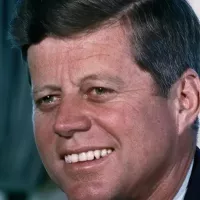
John F Kennedy JFK was the th U S President...

Ronald Reagan the th U S President - was a...
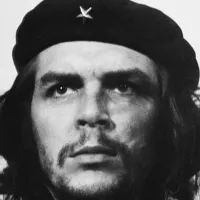
Ernesto Che Guevara was a prominent Argentine Marxist revolutionary physician...
Saudi Arabia officially the Kingdom of Saudi Arabia KSA is...
Trending
58 minutes ago Now You See Me 3: Magic Returns with Jesse Eisenberg in the Lead

58 minutes ago Sofia Coppola Honored at MoMA Film Benefit with Stars Like Kirsten Dunst Present.
Bianna Golodryga is a Soviet-born American news anchor and journalist She is currently a co-anchor on CNN International and CNN...

5 months ago Kelly Clarkson Interview: Benicio Del Toro's Bathtub Scene Question Sparks Audience Reaction
Dirk Nowitzki a retired German professional basketball player and current special advisor for the Dallas Mavericks is celebrated as one...
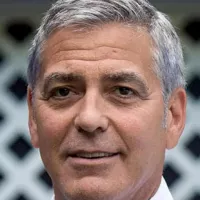
13 days ago George and Amal Clooney's impressive $50 Million property portfolio and Ocean's Fourteen sequel teased.
Popular
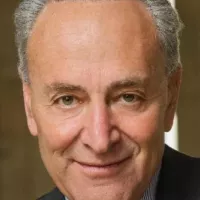
Chuck Schumer is the senior United States Senator from New...
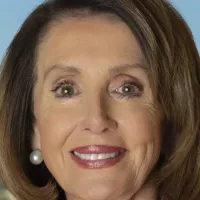
Nancy Pelosi is a prominent American politician notably serving as...
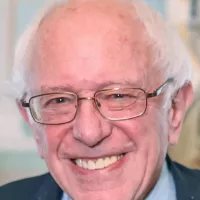
Bernie Sanders is a prominent American politician currently serving as...
Nicholas J Fuentes is a far-right political commentator and activist...

Candace Owens is an American political commentator and author known...

XXXTentacion born Jahseh Dwayne Ricardo Onfroy was a controversial yet...